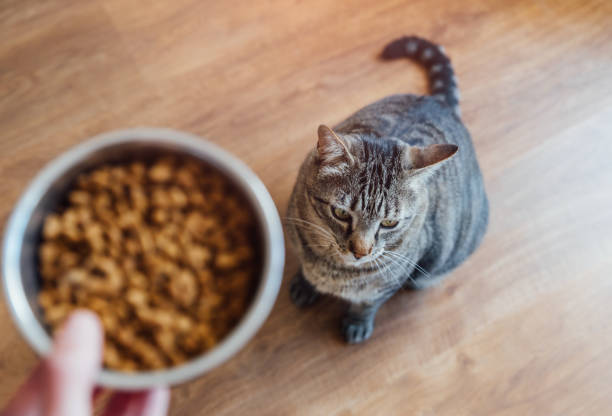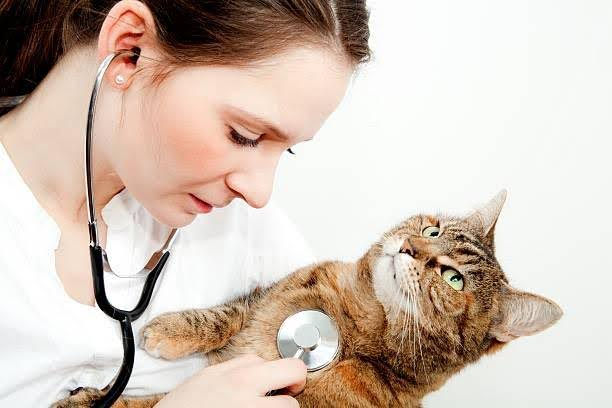How To Calm Down A Cat With Anxiety
- Esther Namawanda
- 2 days ago
- 7 min read

Imagine coming home to find your usually playful cat hiding under the couch, ears flat and eyes wide with fear. Anxiety in cats is more common than many pet owners realize, and it can silently affect their health, behavior, and happiness. From sudden environmental changes to separation stress, many factors can trigger your feline friend’s unease.
But don’t worry, there are proven ways to help your cat feel calm, safe, and confident again. Read on to discover practical strategies for calming an anxious cat, spotting early signs of stress, and restoring peace in your home.
What is Anxiety in Cats
Anxiety in cats is a prolonged state of stress or unease that affects their overall well-being. Unlike brief moments of fear or nervousness, anxiety in cats can persist over time and subtly influence their daily behavior and health.
Cats are naturally creatures of habit, and even minor changes in their environment or routine can create a sense of insecurity. Chronic anxiety in cats can impact their emotional balance, reduce their quality of life, and make them more vulnerable to health issues.
Addressing anxiety is not just about comfort, it’s about supporting your cat’s long-term mental and physical health. Understanding this condition is the first step toward helping your feline companion feel secure, confident, and relaxed in their surroundings.
What are the Symptoms of Anxiety in Cats
Cats often show anxiety through a combination of behavioral and physical signs, which can vary depending on their personality and environment. Being able to recognize these symptoms early is crucial for helping your cat feel safe and supported.
Excessive Grooming or Hair Loss - An anxious cat may over-groom as a coping mechanism, which can lead to bald patches, irritated skin, or scabs. This behavior is often subtle at first but can become more pronounced if anxiety persists.
Hiding or Avoiding Interaction - Cats under stress often retreat to quiet, secluded areas where they feel protected. If your cat suddenly spends more time under the bed, behind furniture, or in closets, it may be a sign of heightened anxiety.
Changes in Appetite - Anxiety can directly affect a cat’s eating habits. Some cats may eat less or refuse food entirely, while others might eat more than usual. Monitoring their diet and providing a customized nutrition meal plan can help stabilize their appetite and reduce stress. Sudden changes in appetite should not be ignored.

Vocalization - Increased meowing, yowling, or other unusual vocalizations can indicate distress. An anxious cat may vocalize more frequently, especially when separated from family members or exposed to new stimuli.
Aggression or Irritability - Anxiety can make cats defensive or unpredictable. Hissing, swatting, or growling at humans, other pets, or even familiar objects can be a way for them to protect themselves.
Litter Box Issues - Cats may urinate or defecate outside their litter box when stressed. This behavior is often linked to anxiety rather than a medical issue and is their way of coping with discomfort or uncertainty.
Recognizing these signs early allows you to intervene with calming strategies, environmental adjustments, or professional help before the anxiety escalates. Understanding your cat’s unique behaviors is key to helping them feel secure, calm, and happy.
What are the Causes of Anxiety in Cats
Understanding what triggers anxiety in cats is essential for providing the right care and support. Anxiety in cats can arise from a variety of sources, ranging from environmental factors to health-related issues. Identifying the root cause allows pet parents to address the problem more effectively and create a calmer, safer environment.
Environmental Changes
Cats are creatures of habit, and even minor changes in their surroundings can cause stress. Moving to a new home, rearranging furniture, or loud, unexpected noises like fireworks, thunderstorms, or construction can make a cat feel unsettled and anxious.
Separation Anxiety
Some cats form strong bonds with their owners and may become distressed when left alone for long periods. This form of anxiety often leads to behaviors such as excessive meowing, destructive behavior, or over-grooming when the cat senses your absence.

Social Stress
Introducing new pets, family members, or even frequent visitors can create tension in a household. Cats are territorial by nature, and sudden changes in social dynamics may trigger anxiety, making them act withdrawn, defensive, or irritable.
Past Trauma or Abuse
Cats that have experienced neglect, abuse, or stressful situations in the past, such as those rescued from shelters, may have heightened sensitivity to new experiences. Past trauma can make them more prone to anxiety in situations that other cats might find manageable.
Health Issues
Physical health directly impacts mental well-being. Pain, illness, or hormonal imbalances can manifest as anxiety in cats. For instance, a cat suffering from chronic pain or a thyroid imbalance may display restlessness, irritability, or fearfulness.
How to Treat and Manage Your Cat’s Anxiety
Managing anxiety in cats requires a combination of patience, understanding, and consistent care. By addressing both environmental and behavioral factors, you can help your feline feel more secure and confident. Here are effective strategies:
Create a Calm Environment
Cats feel safest when they have a personal space to retreat to. Provide cozy bedding in quiet corners, cat trees with elevated perches, or enclosed hideaways like small tents or boxes.
For example, a shy cat may spend less time pacing or hiding under furniture if they have a dedicated “safe room” where they can observe the household without feeling threatened.

Use Calming Products
Pheromone-based products mimic natural cat calming signals and can help reduce stress. Feliway diffusers, calming collars, or sprays can be particularly effective during stressful events like thunderstorms, fireworks, or moving homes.
For instance, placing a Feliway diffuser in a room where your cat spends most of its time can help decrease excessive meowing or scratching caused by anxiety.
Positive Reinforcement
Rewarding calm, relaxed behavior encourages your cat to repeat these actions. Use cat treats, gentle petting, or verbal praise when your cat approaches new experiences without fear.
For example, if your cat calmly investigates a new toy instead of hiding, offering a treat reinforces this confident behavior and gradually builds trust. Avoid punishing anxious reactions, as this can worsen fear.
Maintain a Consistent Routine
Cats thrive on predictability. Keeping feeding times, play sessions, and human interaction consistent can prevent anxiety triggered by uncertainty. For example, feeding your cat at the same time every morning and evening helps them feel secure and reduces stress around mealtimes.
Veterinary Support
In cases of severe or persistent anxiety, consult a veterinarian. They can rule out medical issues contributing to stress and, if needed, prescribe anti-anxiety medications or natural supplements.
For example, a cat suffering from extreme separation anxiety may benefit from short-term prescription treatment alongside environmental enrichment to gradually reduce stress.
Interactive Play and Exercise
Engaging your cat in play provides both mental stimulation and an outlet for nervous energy. Toys like feather wands, laser pointers, or puzzle feeders keep cats physically active and mentally engaged. For instance, a cat that is anxious during visitors’ arrival can be distracted and calmed with a quick interactive play session before guests enter.

By combining these strategies, pet parents can help their anxious cat feel safer, more relaxed, and more confident in everyday situations. Consistency, patience, and observation are key to successfully managing anxiety in cats.
How to Prevent Anxiety in Cats
Preventing anxiety in cats is far easier than treating it, and proactive care can ensure your feline companion lives a calm, confident life. By focusing on environmental stability, social experiences, and overall well-being, you can greatly reduce your cat’s risk of developing anxiety.
Gradual Introductions
Sudden changes in a cat’s environment, such as bringing in a new pet, moving homes, or rearranging furniture, can trigger stress. Introducing these changes slowly helps your cat adjust at their own pace. For example, when introducing a new pet to a resident cat, allow them to first sniff each other under a door or through a baby gate before meeting face-to-face. This controlled exposure reduces fear and encourages positive associations.
Positive Socialization
Early and controlled socialization is key, especially for kittens. Exposing them to different people, gentle handling, household sounds, and everyday experiences can build confidence and resilience.
For instance, letting a young cat hear vacuum noises or meet friendly visitors in a calm setting helps prevent fear-based reactions later in life. Positive reinforcement, like treats or praise, strengthens these good experiences.
Safe Hiding Spots
Cats need access to quiet, secure areas where they can retreat if stressed. Providing cozy hideaways, elevated perches, or covered beds gives them a sense of control over their environment. For example, a shy cat may hide under a bed during parties or when visitors come over, and knowing they have a safe spot helps reduce overall anxiety.
Monitor Health Regularly
Physical discomfort or illness can manifest as anxiety in cats. Regular veterinary check-ups help detect underlying health issues early, preventing stress caused by pain or medical problems.
For example, a cat experiencing dental pain might appear anxious or withdrawn; routine vet care can address the problem before it impacts their mental well-being.

By implementing these proactive strategies, you create a stable, enriched, and safe environment that helps your cat remain relaxed and confident. Prevention is not just about avoiding stress, it’s about giving your feline companion the tools to thrive in any situation.
Conclusion
Helping your cat manage anxiety requires patience, observation, and a combination of strategies tailored to their needs. From identifying symptoms of anxiety in cats to creating a safe and calming environment, you have the power to improve your furry friend’s emotional well-being.
Whether through natural remedies, calming products, or veterinary support, addressing cat anxiety early ensures your companion can live a happier, stress-free life.
If your cat is showing signs of stress or anxiety, don’t wait, start implementing these strategies today and see the positive change in your feline friend’s behavior. For comprehensive support, consider a tailored meal plan for cats from Petly to complement these anxiety-reducing strategies.
By Esther Namawanda




Comments